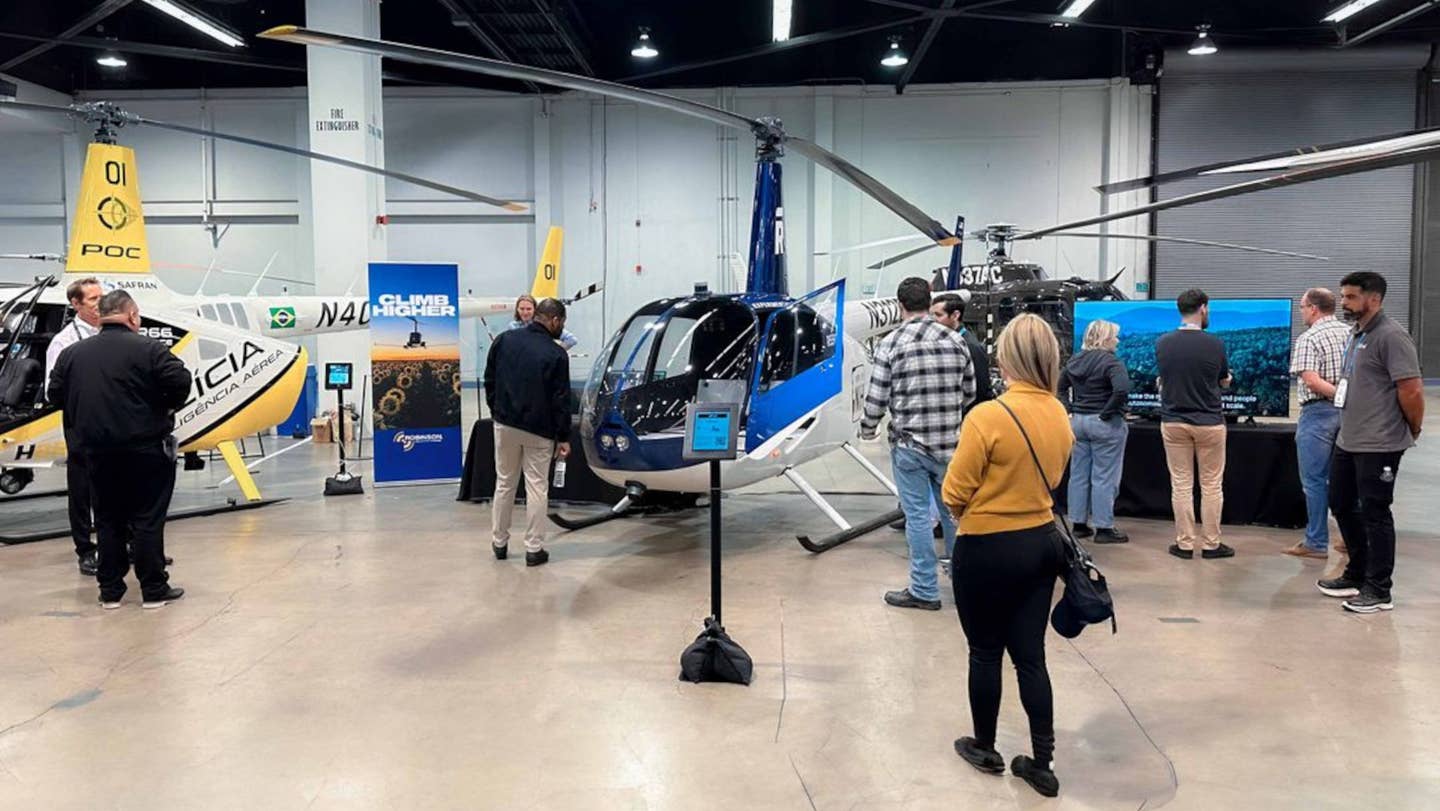Rotor Unveils First Production Uncrewed Aircraft Built on Robinson Platform
The aircraft, on display last month at Heli-Expo in Anaheim, California, will continue its North American tour with appearances in San Diego and Montréal.

Rotor and Robinson displayed the R550X, an uncrewed helicopter based on the latter’s R44 Raven II, at Helicopter Association International’s Heli-Expo in Anaheim, California. [Courtesy: Rotor Technologies]
Correction: Rotor selected Robinson as its platform of choice, but the latter is not involved in the development of the R550X, as a previous version of this story stated.
Rotor Technologies has unveiled the first production uncrewed aircraft built on the Robinson Helicopter Company platform.
The manufacturer of autonomous vertical takeoff and landing (VTOL) aircraft on Wednesday revealed the R550X helicopter to the public for the first time. The uncrewed aircraft, which is based on the design of Robinson’s R44 Raven II, was on display at Helicopter Association International's (HAI) Heli-Expo in Anaheim, California, from February 27-29.
In December, Rotor said it expects the aircraft to fly commercially in the U.S. this year, followed by an international expansion. The partners claim that greater automation will drive safety, scalability, and expanded mission profiles for helicopters.
The R550X is the first production uncrewed aircraft to be built on the Robinson platform. Rotor first announced the design in December with plans to build two models, intended to be delivered to agricultural aircraft operators for crop spraying.
However, the helicopter is also designed for utility, maritime, and cargo operations—specifically, in situations where the pilot might be exposed to a hazardous environment or which are too difficult for lighter aircraft.
The experimental category aircraft has a 1,200-pound payload with no pilot, capable of flying for three hours at a top speed of 130 ktas. Its range extends beyond the vast majority of drones and eVTOL air taxis, the partners claim.
The R550X’s lidar system provides 360-degree situational awareness, which enables flights at night or in low visibility. Onboard software, meanwhile, helps avoid accidents such as inadvertent entry into instrument meteorological conditions, loss of control, mast bumping, and controlled flight into terrain.
A static prototype of the design called the Spirit of New Hampshire—which completed its first live test flight in January before guest of honor Chris Sununu, the governor of New Hampshire—was on display at Heli-Expo alongside a Robinson police helicopter, implying at least one potential use case. Visitors could interact with the aircraft’s lidar systems, camera, and synthetic vision.
The R550X will continue its North American tour next month with a planned display at Association for Uncrewed Vehicle Systems International’s (AUVSI) Xponential in San Diego, which begins April 22. The following month, the partners intend to take it to Vertical Flight Society’s (VFS) Forum 80 in Montréal, starting May 7.
Rotor CEO Hector Xu added that he and newly minted Robinson CEO David Smith are developing plans to begin low-rate manufacturing for the aircraft.
“David and I share a common product vision,” said Xu. “Our collaboration will combine Rotor’s technology with Robinson’s dynamic and scalable supply chain to deliver the world’s most capable commercial uncrewed VTOL.”
Heli-Expo marked a major leadership transition for Robinson, which has had just three chief executives across its 50-year history. Smith replaced Kurt Robinson, the son of Robinson founder and aviation pioneer Frank Robinson, as CEO in February. The company positioned Smith as a fresh face, emphasizing his commitment to innovation, expanded manufacturing capabilities, and the development of new product initiatives.
“I look forward to working with the more than 400 service centers and dealers and the more than 1,100 employees of [Robinson] as we pursue new products, markets, partnerships, and technologies,” said Smith.
Rotor is not the only company exploring automation with Robinson rotorcraft.
In 2022, an R66 single-engine helicopter completed the first Guinness World Records-certified automated autorotation procedure for an emergency landing. Skyryse, whose technology was installed on the aircraft, will sell a retrofit R66 called Skyryse One for about $2 million. But the model will not be capable of fully uncrewed flight.
Robinson competitor Sikorsky, owned by Lockheed Martin, is also exploring uncrewed prototypes. The manufacturer last year unveiled an autonomous, hybrid-electric VTOL concept called HEX, which it said will be the first in a family of self-flying VTOL models. Last month, it revealed that the aircraft will feature a unique tilt-wing design.
Like this story? We think you'll also like the Future of FLYING newsletter sent every Thursday afternoon. Sign up now.

Subscribe to Our Newsletter
Get the latest FLYING stories delivered directly to your inbox






